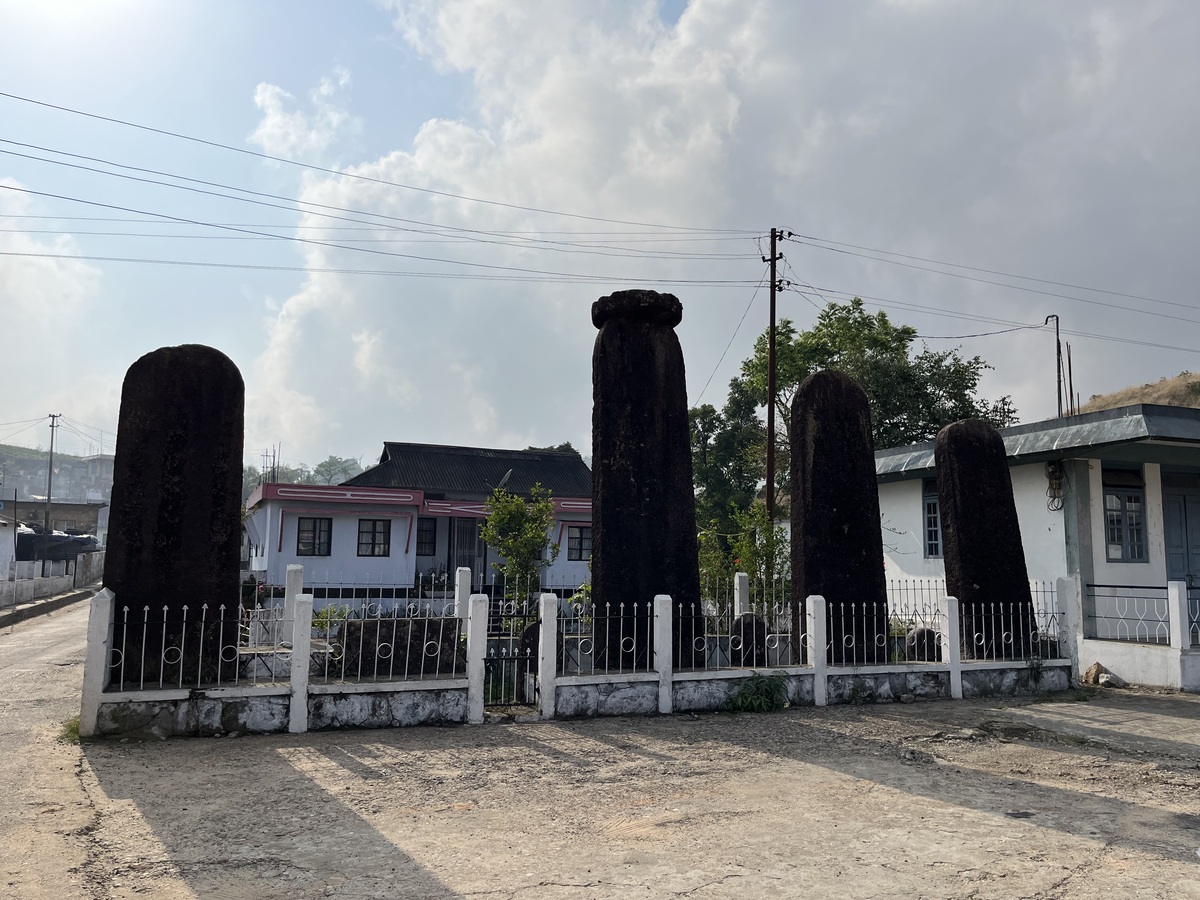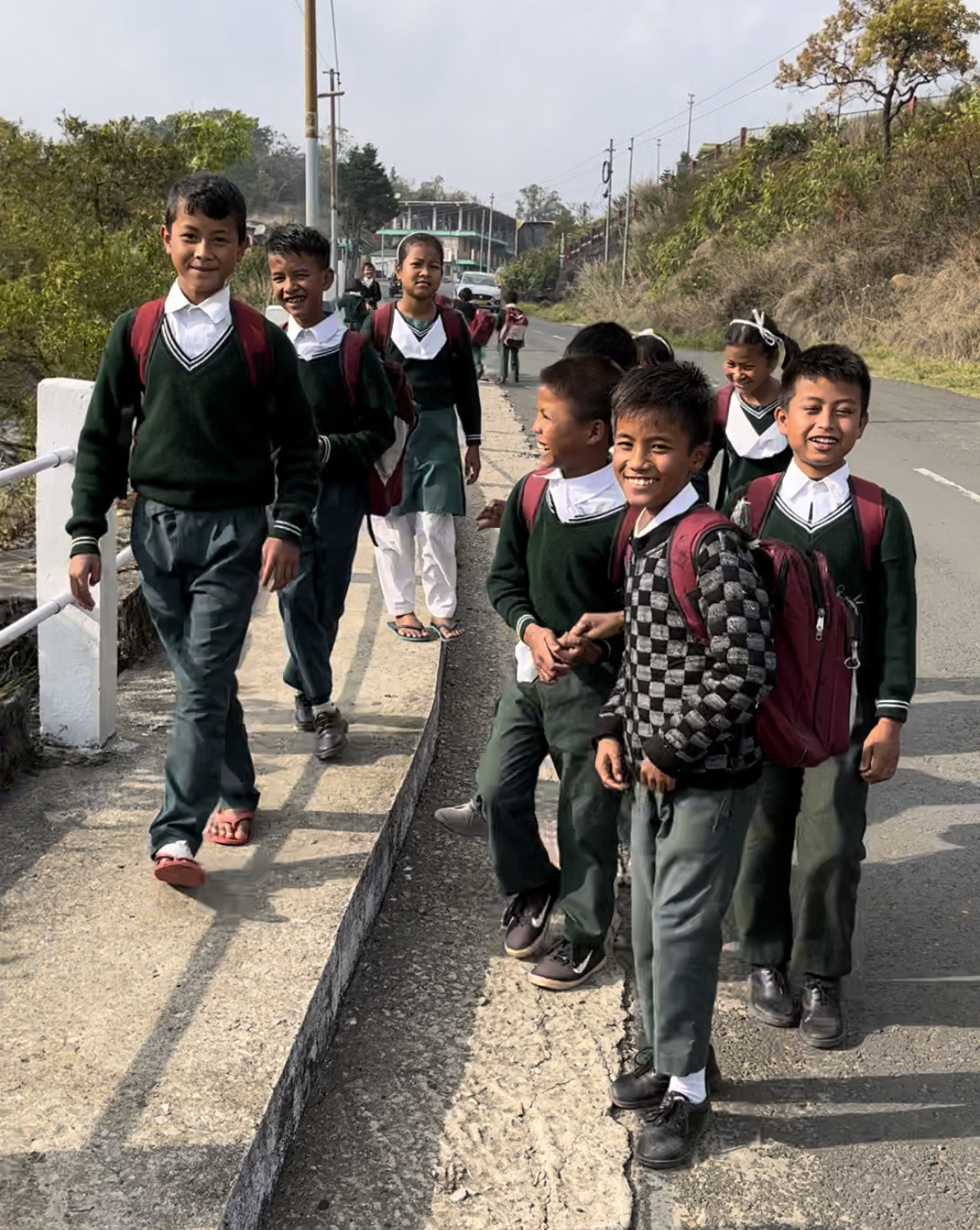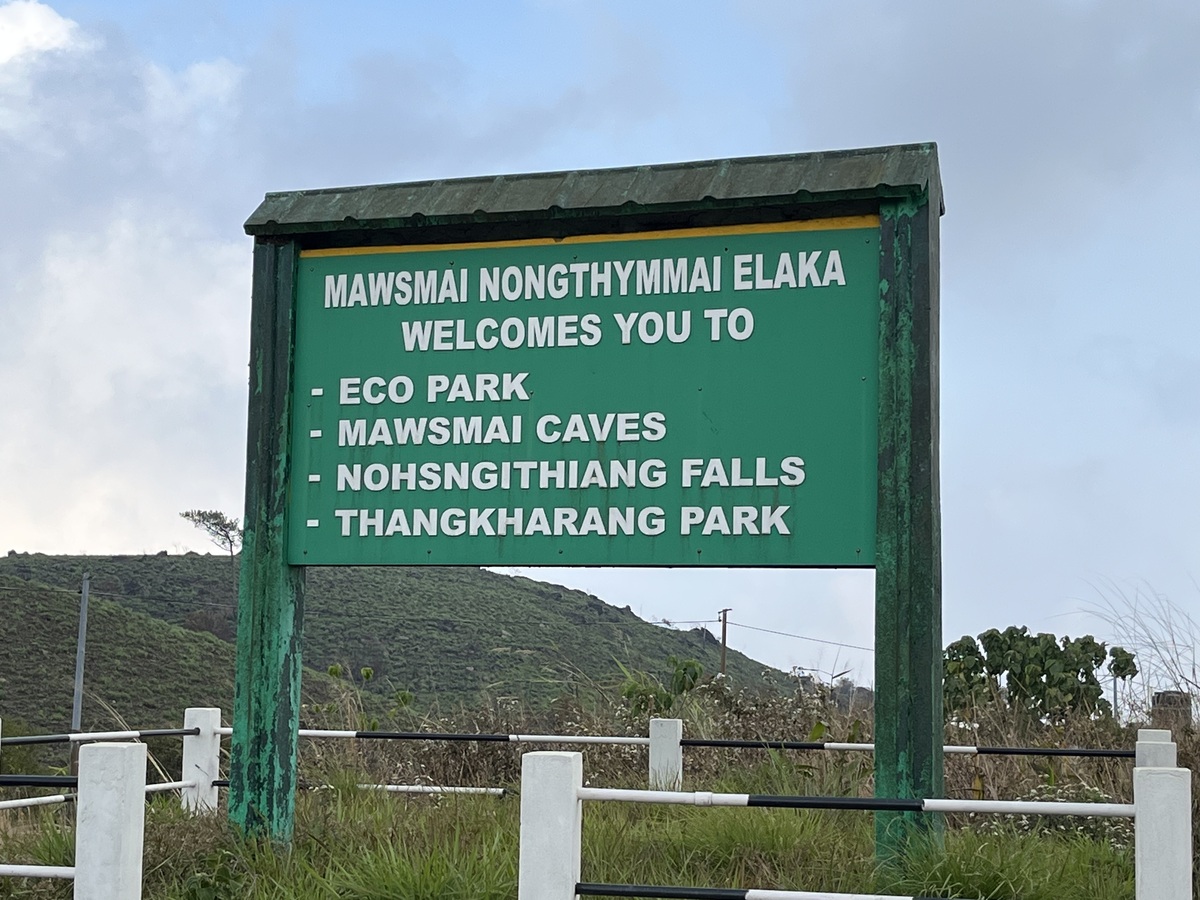Khasis, their Origin and History
The term "Khasis" holds a profound meaning, as it signifies "born of the mother". The word "Kha" denotes "born of", while "si" represents "ancient mother". As the Khasis lack a written history unlike the Ahoms of Assam, their past is primarily based on traditional oral narratives that have been passed down through generations. One prevalent belief among the older Khasis is that their ancestors migrated from Burma via the Patkai Range into Assam, a notion supported by similarities between Khasi culture and that of the Mon-Khmer people of Cambodia. With respect to indian tribes, slight similarities can be observed between the Khasis and the Mundas of the Chota Nagpur Plateau, particularly in their last rites rituals.
 Monoliths, erected in memory of their ancestors and local heroes who died in battles.
Picture credit: @aryan
Monoliths, erected in memory of their ancestors and local heroes who died in battles.
Picture credit: @aryan
Origin Myth(Legend of Seven huts)
According to legend, in the beginning, the god created sixteen families and allowed them to dwell with him in heaven. They could freely move between heaven and earth using a golden ladder that touched the peak named Sohpetbneng, also known as "the navel of heaven." However, one day, seven families chose to stay on earth, and as a result, the ladder was removed. These seven families are believed to be the ancestors of the Khasis, known as Ki Hynniew Ha Tbian.
Geography
The Khasi Hills are located in the middle of the Meghalaya plateau, flanked by the East and West Garo Hills. Prior to the creation of the Meghalaya state, the united Khasi and Jaintia Hills were one of the districts of Assam. Meghalaya state was formed on 2nd April 1970, with full statehood granted on 21st January 1972. At that time, only two districts were formed: (a) The United Khasi and Jaintia Hills, with headquarters in Shillong, and (b) Garo Hills, with headquarters in Tura. Over time, Meghalaya has grown to have 12 districts, but these two districts continue to represent the cultural and geographical core of the state.
Tribes and Sub-tribes
"Khasi" is a general term that encompasses various tribes and sub-tribes inhabiting the Khasi and Jaintia Hills:
- Khyriem or Nonglum(proper khasis), inhaniting the middle ranges of Khasi hills.
- Pnars, reside in the central plateau of the Jaintia Hills.
- The War people, reside on the south of the Khasi hills.
- The Amwi people, reside on the south of Jaintia hills.
- The Bhoi people, reside on the north of Khasi and Jaintia hills.
 Local Khasi children returning from school.
Local Khasi children returning from school.
Picture credit: @aryan
Although the majority of Khasis I encountered during my trip were Christians. This can be majorly attributed to the influx of missionaries who arrived in the Khasi Hills in the late 18th century, when the British came into contact with the Khasi tribe after the capture of Assam around 1823. One prominent Welsh missionary who stands out is Thomas Jones, who arrived in Sohra (Cherrapunji) around the 1830s. He quickly learned Khasi and became the first missionary to preach the Bible in Khasi. He is also called the "Founding Father of Khasi Alphabet." Almost every Khasi I interacted with, including cab drivers, farmers, and lower primary teachers, knew about him and held him in high esteem.
Another respected figure among the local Khasi people whom I encountered during my trip was a local tribe chief and freedom fighter named "U Tirot Sing." Known for leading a valiant resistance war against the British for four years (1829-1833), he is held in high esteem by everyone I interacted with. His memorial is located in Mairang, about 45 km from Shillong.
Culture and Festivals
As per Khasis tradition, which traces their descent from "the first mother," the mother in the family serves as the organizer and originator of each clan i.e matrilineal system.
The mother that is the youngest among the sisters is the custodian of the family rights and property. She is succeeded by her youngest daughter, who assumes the responsibility of preserving the family's rights and property. The youngest daughter performs all religious ceremonies in the family, and her duties also include taking care of her aged parents, as well as her unmarried brother and sister.
The most remarkable feature of Khasi marriage is that, in earlier days, the husband customarily lives with his wife in the mother-in-law's house until his wife gives birth.
While having a conversation with the owner of my Mawphlang homestay, the youngest daughter mentioned that they still follow the tradition of the youngest daughter assuming the responsibility of preserving the family's rights and property. However, there has been a slight change in the custom of the other sister's husband staying until childbirth. Now, they stay at their mother-in-law's place only for a few months, until they have set up a new place, unlike the older custom of staying until childbirth.
Nongkrem festival, the annual religious ceremony of the Khyrim clan, is presently the most ancient and renowned festival of the Khasis.
According to tradition, U Shillong, the first ancestor of the Syiem clan of Khyrim, was the founder of the state. The origin of this festival can be traced back to his time as king, when all clans lived harmoniously.
I was unable to experience the Nongkrem Dance Festival during my visit in March, as it occurs during the month of November, when prayers are offered for a good harvest after the harvest season.
Democratic tradition
 Starting of Mawsmai Elaka near Sohra. Multiple raids form an Elaka.
Starting of Mawsmai Elaka near Sohra. Multiple raids form an Elaka.
Picture credit: @aryan
The state is governed by a Darbar or Council consisting of myntries, who are elected by the people, and the syiem (chief), who is elected by the myntries from a member of the siem clan.
The entire state is formed by an association of units called Raid, which consist of one or groups of villages and are governed by a Durbar consisting of elected representatives from each village.
The Gazette of Meghalaya here provides a detailed explanation of Raid, Elaka, Syiem, Darbar, and other related terms.